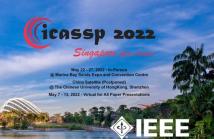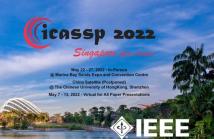
- Read more about CNN-AIDED FACTOR GRAPHS WITH ESTIMATED MUTUAL INFORMATION FEATURES FOR SEIZURE DETECTION
- Log in to post comments
- Categories:
 9 Views
9 Views
- Read more about CNN-AIDED FACTOR GRAPHS WITH ESTIMATED MUTUAL INFORMATION FEATURES FOR SEIZURE DETECTION
- Log in to post comments
We propose a convolutional neural network (CNN) aided factor graphs assisted by mutual information features estimated by a neural network for seizure detection. Specifically, we use neural mutual information estimation to evaluate the correlation between different electroencephalogram (EEG) channels as features. We then use a 1D-CNN to extract extra features from the EEG signals and use both features to estimate the probability of a seizure event. Finally, learned factor graphs are employed to capture the temporal correlation in the signal.
- Categories:
 11 Views
11 Views
- Read more about BNU: A BALANCE-NORMALIZATION-UNCERTAINTY MODEL FOR INCREMENTAL EVENT DETECTION
- Log in to post comments
Event detection is challenging in real-world application since new events continually occur and old events still exist which may result in repeated labeling for old events. There- fore, incremental event detection is essential where a model continuously learns new events and meanwhile prevents per- formance from degrading on old events.
- Categories:
 16 Views
16 Views
- Read more about LEARNING TO PREDICT SPEECH IN SILENT VIDEOS VIA AUDIOVISUAL ANALOGY
- Log in to post comments
- Categories:
 10 Views
10 Views
- Read more about Quantum Federated Learning with Quantum Data
- Log in to post comments
Mahdi Poster.pdf
- Categories:
 20 Views
20 Views
- Read more about Phonotactic Language Recognition using a Universal Phoneme Recognizer and a Transformer Architecture
- 1 comment
- Log in to post comments
In this paper, we describe a phonotactic language recognition model that effectively manages long and short n-gram input sequences to learn contextual phonotacticbased vector embeddings. Our approach uses a transformerbased encoder that integrates a sliding window attention to attempt finding discriminative short and long cooccurrences of language dependent n-gram phonetic units. We then evaluate and compare the use of different phoneme recognizers (Brno and Allosaurus) and sub-unit tokenizers to help select the more discriminative n-grams.
Poster.pdf
- Categories:
 51 Views
51 Views
- Read more about On Identifiable Polytope Characterization for Polytopic Matrix Factorization
- Log in to post comments
Polytopic matrix factorization (PMF) is a recently introduced matrix decomposition method in which the data vectors are modeled as linear transformations of samples from a polytope. The successful recovery of the original factors in the generative PMF model is conditioned on the "identifiability" of the chosen polytope. In this article, we investigate the problem of determining the identifiability of a polytope. The identifiability condition requires the polytope to be permutation-and/or-sign-only invariant.
- Categories:
 9 Views
9 Views
- Read more about Enhancing class understanding via prompt-tuning for zero-shot text classification
- Log in to post comments
- Categories:
 26 Views
26 Views
- Read more about Modeling Of Pre-trained Neural Network Embeddings Learned From Raw Waveform For Covid-19 Infection Detection
- Log in to post comments
COVID-19 is a respiratory system disorder that can disrupt the function of lungs. Effects of dysfunctional respiratory mechanism can reflect upon other modalities which function in close coupling. Audio signals result from modulation of respiration through speech production system, and hence acoustic information can be modeled for detection of COVID-19. In that direction, this paper is addressing the second DiCOVA challenge that deals with COVID-19 detection based on speech, cough and breathing.
- Categories:
 14 Views
14 Views
- Read more about Path signatures for non-intrusive load monitoring
- Log in to post comments
- Categories:
 10 Views
10 Views